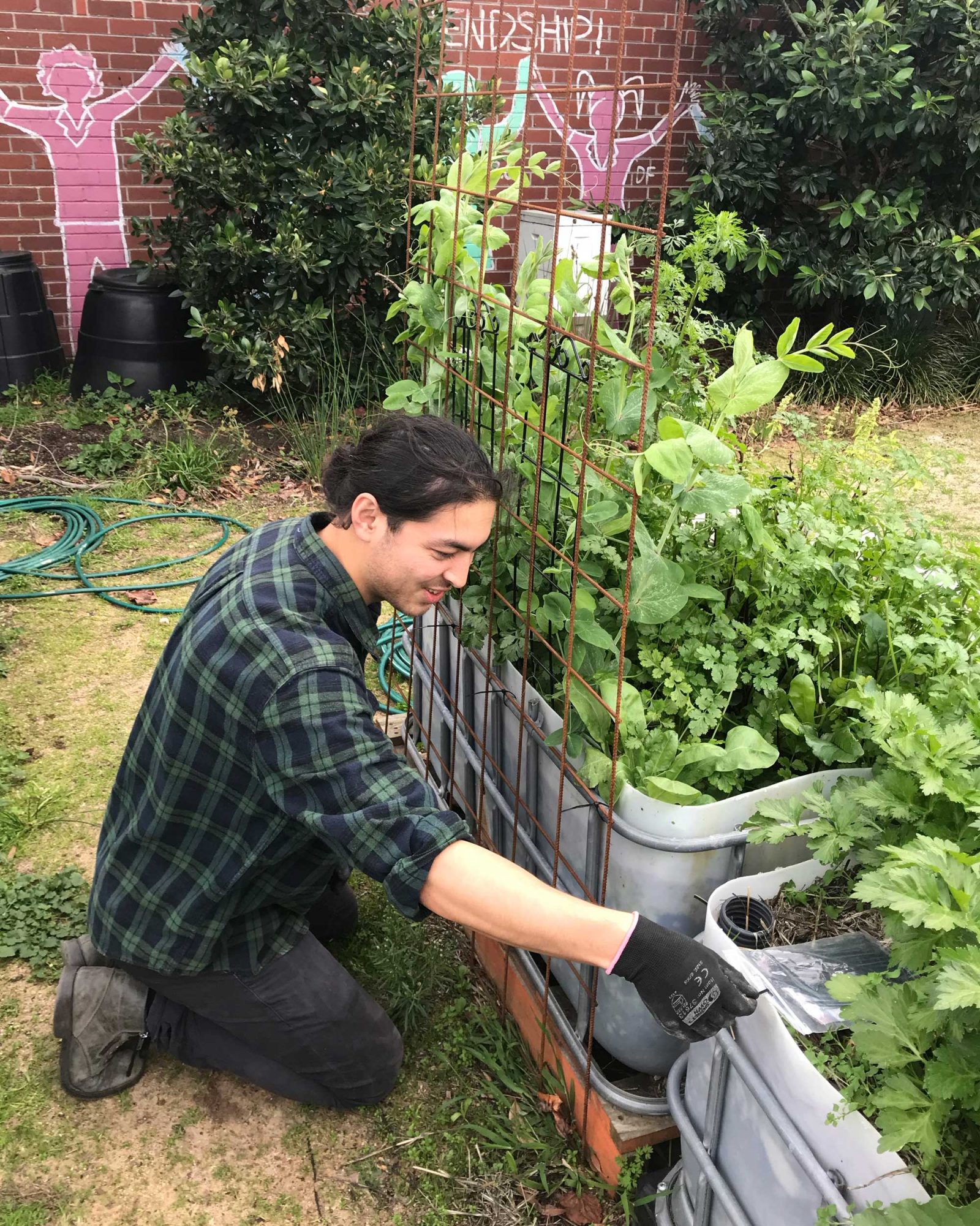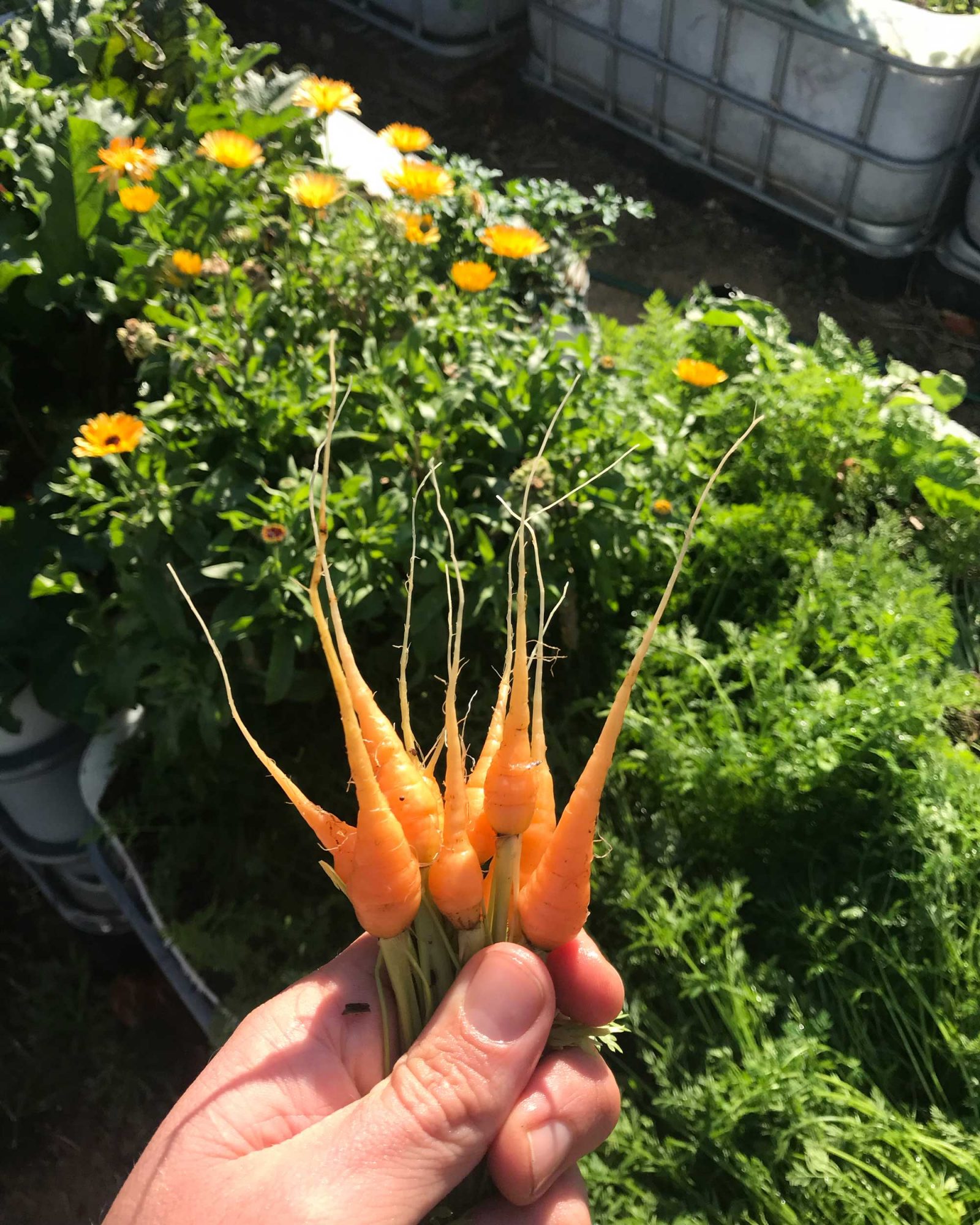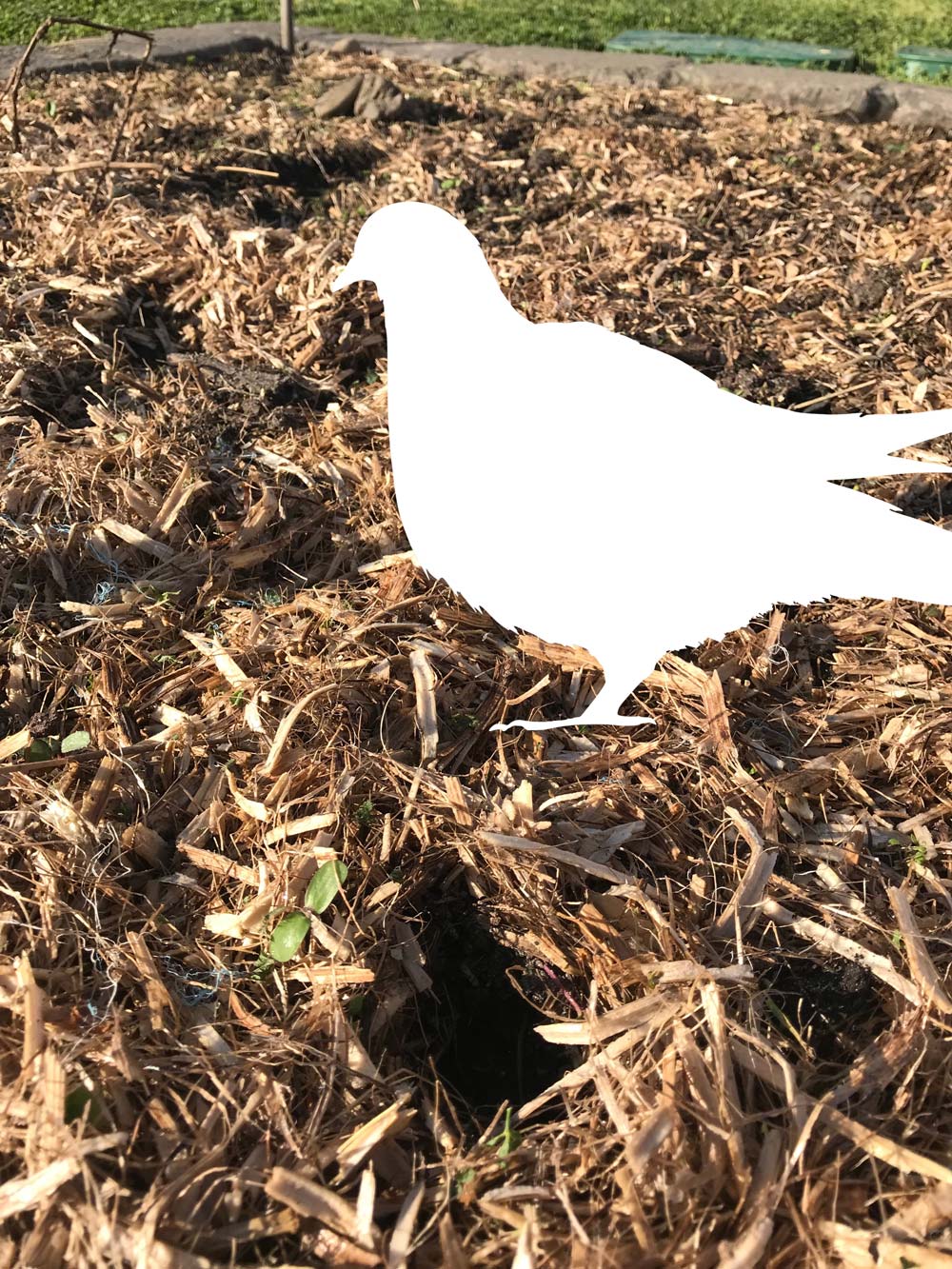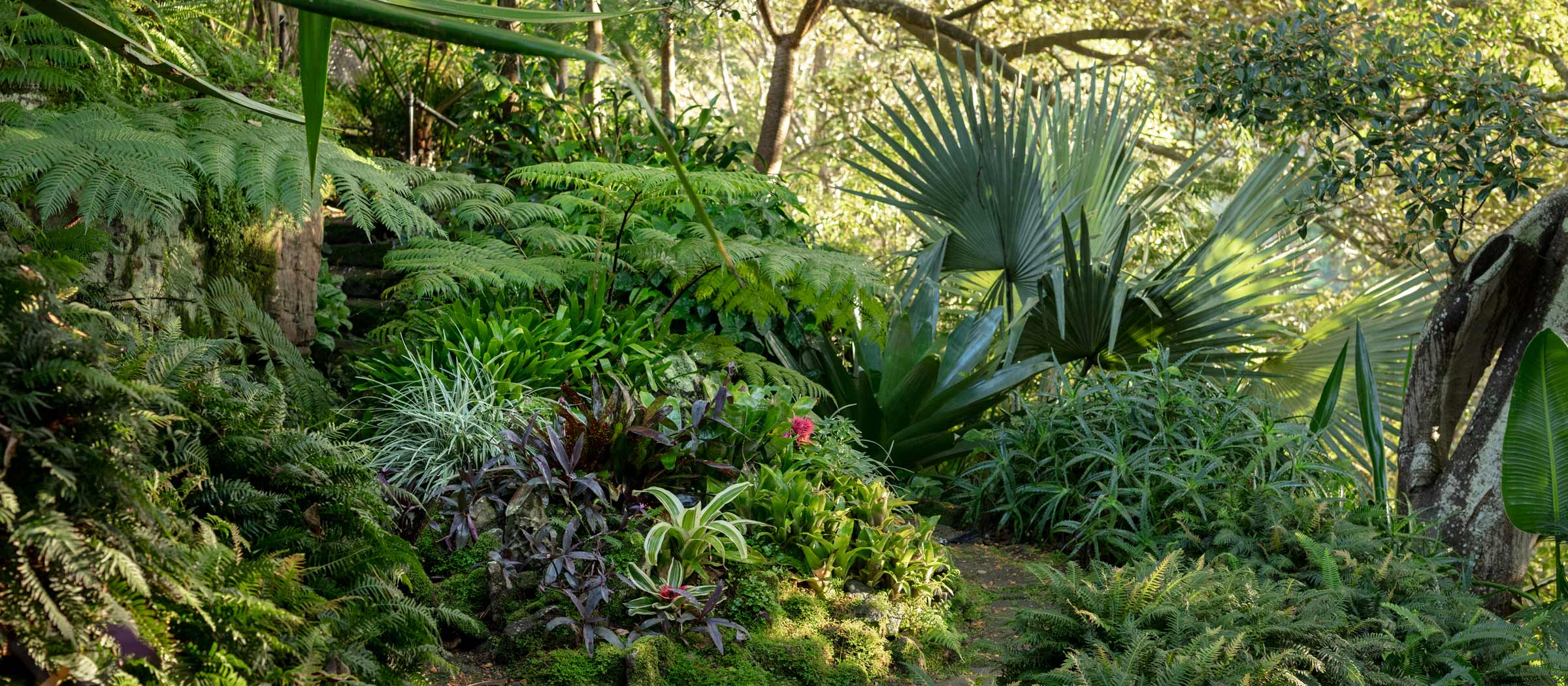Landscape Architecture and the Garden

- Words by
- Bede Brennan
- Images by
- Bede Brennan
The origins of landscape architecture and gardening are entangled. Whilst they’ve grown from the same rootstock – both broadly involving interventions in the landscape – I feel a tension between the two practices which arises from different methods used by each. In landscape architecture, design is explored primarily in the realm of representation – using pencil and paper, computer programs or models – in an abstract space one step removed from the physical word. Gardening is more direct, involving physical intervention and action in space; design enacted day-to-day. These different planes of operation mean the two practices don’t always see eye to eye, even when sharing common goals. This disconnect can sometimes result in the undervaluing of the physical act of gardening. I believe that both practices are important and have lessons to teach the other, but to me it is in the garden where the richest dialogue with the non-human world can occur.

I am lucky to have two gardens to tend; a small community garden at Siteworks, a community facility in the Melbourne suburb of Brunswick, and a sprawling vegetable plot at my house. Feeding the chooks in the morning, planting some seeds on my lunch break or harvesting something for dinner are some of my greatest pleasures. But these gardens are fragile places; at the mercy of landlords, possums and the harsh Melbourne wind. I can wake up one morning to find the chooks have escaped and desecrated my most fragile seedlings, a hot wind has killed all my pot plants, or some well-meaning person at the community garden has pulled out the chickweed I was planning to have for lunch as a salad. This is the regular experience of gardeners, the to and fro of projects succeeding or being thwarted by unexpected forces. Such dynamic and immediate feedback from the non-human world is not always as easy to access in landscape architectural practice.

Landscape architecture has evolved to become a design profession which is instrumental in shaping our public spaces, but this specialization and professionalization has necessitated a movement ever further away from gardening. As landscape architecture has developed, the profession has aspired to, and borrowed theory from, architecture and the tectonic. But as Julian Raxworthy points out in his Manifesto for the Veridic, in his book Overgrown: Practices between Landscape Architecture and Gardening, the primary material of landscape architecture is different to the material of architecture in a fundamental way – it is alive. Gardeners have not forgotten this.
…the primary material of landscape architecture is different to the material of architecture in a fundamental way – it is alive. Gardeners have not forgotten this.
Bede Brennan
In my daily practice as a landscape architect I spend a lot of time disembodied, operating in the realm of digital representation. Working as a landscape architect is a privileged position – A designer holds the power, and responsibility, to shape landscapes over a large scale. Landscape architects use tools and techniques to build a picture of a place before embarking on designs which, we hope, create richer environments for all inhabitants. However, design in landscape architecture is conducted in the form of representation; pen and paper, computer program or model. Tools of representation are becoming ever more potent. Data collection and modelling allow representations to more richly reflect reality, but it remains hard, or at least uncommon, to represent and model the unexpected: things like plant disease, novel ecological succession, or a rogue possum. As the framing of representation is set by the designer, with unconscious bias dictating what fits within or outside the representation, the designer has total control of what is represented in that space.
Any gardener will tell you that the same control is not possible in the garden. My friend Akira and I recently spent an afternoon walking around the grounds of Siteworks with a sack of sunflower seed, digging careful holes and planting, excited by the prospect of a forest of summer sunflowers. A few days later, walking past, I noticed a creature had followed our footsteps, and carefully dug neat holes to reach down and eat the germinating seed. Whether this creature was avian or mammal, operated by day or night, is resident or was passing through, I don’t know. It certainly was a meticulous operator, much neater than I would expect from the chief suspect, a possum. But now that the remaining seeds have put leaves out, it is clear that this creature has missed a few spots. Between ourselves and this creature, we have decided where the sunflowers will grow.

Akira tending to the garden at Siteworks 
Carrots from the Siteworks garden!
Many landscape architects practice gardening. I once worked at a desk opposite Thomas Gooch, who, among his fineliners and scale rulers, kept a beautiful pair of secateurs. He tells me the secateurs serve an important purpose, providing a reminder that it is within the garden where his practice can become tactile, the physicality helping to build connection with place. Another landscape architect who gardens, Haiku Van Keuk, describes gardening as a sort of antidote, where the controlled and precise hand of the designer can give way to a more haphazard approach, scattering seeds and waiting to see what happens before deciding on next steps. This design through action is more iterative, with a temporality which involves many small daily actions, rather than one large transformation. Both Thomas and Haiku describe their gardening practice as something that enriches their work as landscape architects, and the other way around.
In my experience, gardening, especially vegetable gardening, is a practice filled with failures. Seeds don’t germinate, mysterious fungi infect crops, or the bounty is too numerous and goes to waste. Even an experienced and fastidious gardener will be thwarted from time to time, by unseasonable weather or rogue pests. The garden is not an easy place to curate; it is where the non-human world can talk back. Experienced gardeners tend to have a stoic and tolerant approach to this chaos, and a desire to include others in this conversation. As Thomas points out, “A good gardening friend will quickly have you in the garden, helping out with task at hand – whoever you are.”
I see gardening as an enriching experience. There is no denying that we live in an increasingly screen mediated world, one step removed from direct practice. I believe spending time gardening isn’t just a salve for sore eyes, it’s immersion in a two-way conversation with the non-human world, a reminder that not everything can be captured within even the most powerful representation. Landscape architecture is often searching for tools to better get to know a place and its inhabitants, before beginning to design it. Perhaps gardening offers a way to do this.
Thanks Julian Raxworthy for writing Overgrown and Haiku Van Keuk, Akira Ode and Thomas Gooch for their input into this story. @siteworks_garden has a reward out for any information leading to the disruption of the seed eating creature.

Who ate the sunflower seed?! A pigeon? 
Possum? 
Human?! 
Crow?













